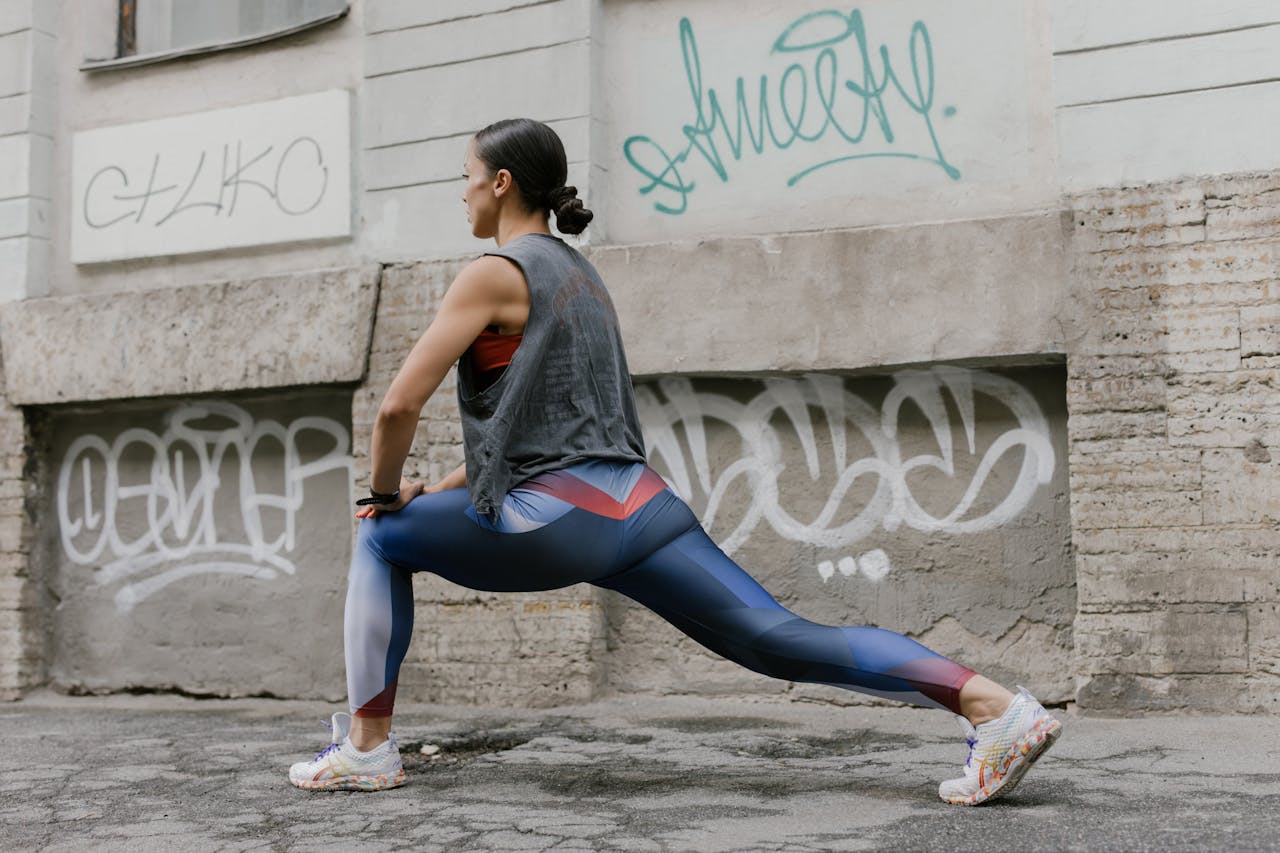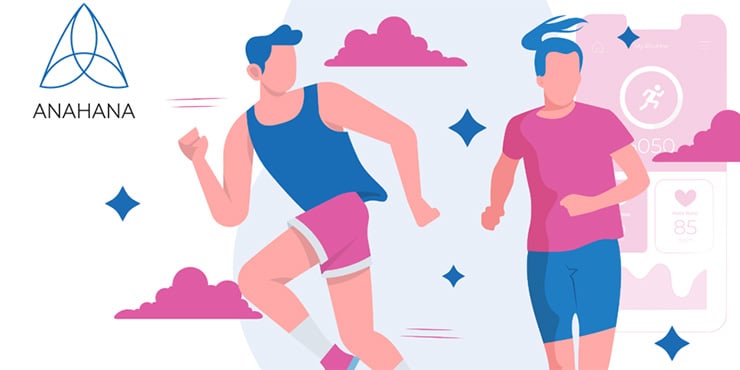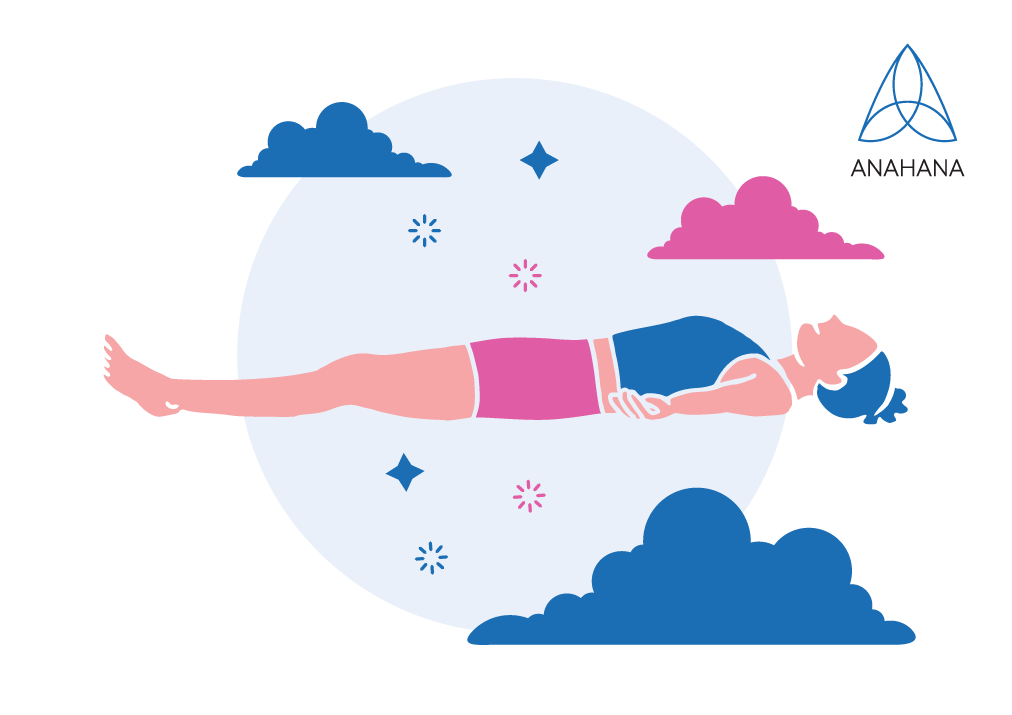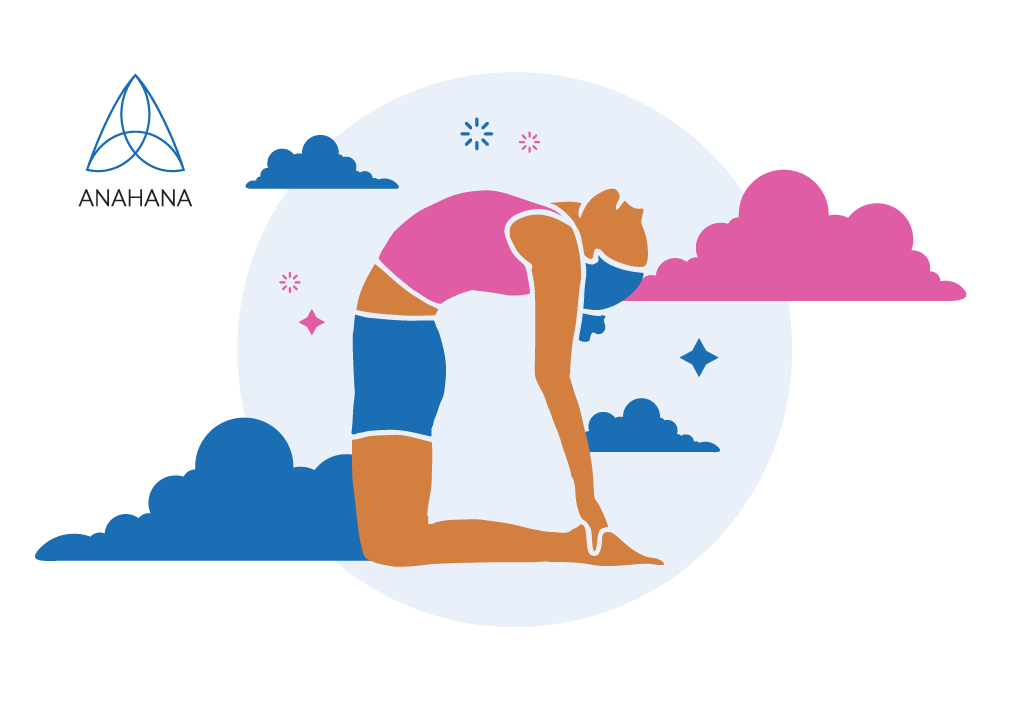
Table of Contents
Regular yoga practice has many benefits for runners. Yoga can help improve mobility, which can help prevent injuries. Second, yoga can help build strength and endurance.
Third, yoga can help improve breathing and lung capacity and calm the mind, which can be helpful on race day. Fourth, yoga can help improve your balance and coordination, which can come in handy when running on uneven terrain. Finally, yoga can help boost the immune system, which is essential for a running routine for those constantly training and pushing their body to the limit.
What Is Yoga Practice For Runners?

Yoga for runners is a simple yoga routine that focuses on improving the flexibility and strength of the muscles used in the running. It can help to improve your running form, reduce your risk of injury, and increase your overall performance. While there are many different types of yoga, runner-specific yoga classes focus on poses that open up the hips and chest and lengthen the muscles in the legs.
Runner-specific yoga classes can also help to improve your breathing and increase your endurance. If you're running and are interested in trying yoga, look for a specifically designed class or a yoga teacher with experience working with runners.
Physical benefits of yoga for runners
There are many ways how yoga can help improve running performance, prevent injury, improve mobility and flexibility, and many more. Here are just a few:
-
Improved form
-
Improved running economy
-
Injury prevention
-
Lengthening of muscles that may be tight
-
Faster recovery
Studies have shown that those who practice yoga have a better running economy than those who don't. This improved form can lead to a more efficient running economy, which is the energy you expend at a given pace.
Mental benefits of yoga for runners
In addition to the physical benefits, yoga can also help runners improve their mental game. The breathing exercises learned in yoga can help calm nerves and ease anxiety before a race. The mindfulness cultivated through yoga practice can also help with being more present during the runs, helping to focus on the task at hand rather than letting the minds wander.
Deep breathing exercises can help to improve mental stamina and physical endurance essential for long-distance running and sprinting. Research shows that many runners and professional athletes have benefited from incorporating breathwork and pranayama into their training regimen.
Key yoga poses for runners
Running is a great way to get in shape, but it can also put a lot of stress on your body. Here are some yoga poses that are perfect for runners:

Corpse Pose
This pose is excellent for relaxation and restoring energy levels. To do the corpse pose, simply lie on your back on the ground. Close your eyes and focus on taking deep, cleansing breaths. Let your whole body relax and clear your mind. Hold this pose for at least 5 minutes.
Child's pose
This pose is perfect for releasing tension in your lower back and hips. To do child's pose, you will need to kneel on the ground. Then, put your forehead on the floor in front of you and stretch your arms out. Take deep breaths and hold this pose for at least 30 seconds.
Downward dog
This pose is excellent for stretching your hamstrings and calves. To do downward facing dog or adho Mukha Svanasana, start in a plank position. Then, lift your hips into the air so that your body forms an upside-down "V" shape. Keep your feet hip-width apart and your hands shoulder-width apart. Take deep breaths and hold this pose for at least 30 seconds.
Warrior III
This pose is excellent for strengthening your core and improving balance. To do Warrior III, start in a standing position. Then, lunge forward with your left leg and raise your right leg behind you. Reach your arms out in front of you and keep your gaze focused on a point. Take deep breaths and hold this pose for at least 30 seconds.
Cobra Pose
This pose is ideal for stretching your chest and shoulders. To do the cobra pose, start by lying on your stomach. Then, place your hands on the ground next to your shoulders and push yourself up so that your upper body is off the ground. Keep your lower body on the ground and take deep breaths. Hold this pose for at least 30 seconds.
Triangle pose
This pose is fantastic for stretching your hips, thighs, and chest. To do a triangle pose, start by standing with your feet hip-width apart. Then, step forward with your right foot and lunge. Reach your right hand down to the ground next to your right foot. Extend your left arm up into the air. Turn your gaze up to the ceiling and take deep breaths. Hold this pose for at least 30 seconds.
Half-moon pose
This pose works on stretching your hamstrings and calves. To do the half-moon pose, start by standing with your feet together. Then, step forward with your right foot and lunge. Reach your left hand down to the ground, next to your right foot, and place your right hand on your hip. Raise your left leg into the air and take deep breaths. Hold this pose for at least 30 seconds.
Cat-cow pose
This familiar pose loosens your back and neck. To do the cat-cow pose, start by getting on all fours. Then, arch your back and look at the ceiling (cow pose). Next, round your back and tuck your chin to your chest (cat pose). Alternate between these two yoga poses and take deep breaths. Hold each pose for at least 30 seconds.
Low Lunge
The low lunge (Anjaneyasana) is well-known for being a great hip opener, but it also stretches the groin and thighs. Tight hips are a common problem among runners, causing underactive gluteal muscles and posing the risk of knee and/or back problems. This posture is all about concentration. It might be done against a wall to enhance balance.

Camel Pose
This pose helps open up your chest and shoulder area. To do the camel pose, start by kneeling on the ground. Then, place your hands on your lower back and lean back. Reach your right hand back and grab your right ankle. Use your left hand to grab your left ankle. Take deep breaths and hold this pose for at least 30 seconds.
Yoga asanas runners should avoid
Some yoga poses should be avoided or approached with extra attention. These asanas can be too intense for runners who are already dealing with a lot of inflammation and stress in their bodies. Poses to be careful with include:
Pigeon pose
Since runners are prone to tight hips, hip flexors, and knees, the pigeon pose can be a challenging and intense pose that one should approach carefully. Many are inclined to reduce the intensity by compensating by pushing into the lower back. Feeling strange sensations in your knees during the Pigeon Pose signals that something might be going on with the joints.
Eagle pose
The Eagle pose incorporates multiple twisted joint movements, especially on the outside, which can amplify the intense knees that are already tight from high-impact running. The best way to practice this pose is by easing into it instead of forcing it.
Forwards bends and folds
Fold and bends are great hamstring stretches. However, runners with excessive tensity in those muscles have a significant risk of overdoing and overstretching the muscles if the poses are forced. Like the eagle pose, it’s better to ease and breathe into it rather than forcefully reach for the toes. Tight hamstrings can significantly benefit from this asana if done correctly.
Runners shouldn't avoid these asanas altogether but must be careful by listening to the body and only go as far as feels comfortable.
Finish off the yogic practice by laying down in the resting pose. Breathe deeply and rest while laying on the yoga mat.
Can yoga help with the runner’s knee?
Runner's knee is a common injury that can be caused by several different factors. It is usually characterized by pain around the kneecap and can make running and other activities difficult. While a runner's knee can be painful, there are several things you can do to ease the pain and get back to running as soon as possible.
Yoga can help with the runner’s knee by stretching and strengthening the muscles around the knee which can help to relieve pain and prevent further injury. Athletes with a runner's knee (patellofemoral pain syndrome) can benefit from the gentle muscle-strengthening poses of yoga. Doing yoga before or after running can also help prevent runners' knees in the first place.
Before performing yoga, it is critical to know whether you have a runner's knee. Start by using a knee pain symptom checker. The following can all be signs of patellofemoral pain syndrome or runner’s knee:
-
Pain behind knee
-
Knee pain when bending
-
Lateral knee pain
-
Pain in the front of the knee
For those with knee conditions, yoga before or after cardio can help, but it’s essential to consult with the doctor first. In general, here are some yoga postures for runners — along with other exercise tips — that can help with knee pain if you are a runner:
-
IT band stretch – IT band stretches work the iliotibial band, which goes from the hip to the knee
-
ITB stretches with a foam roller
-
Yoga quad stretch including crescent lunge, dancer’s pose, camel bose and bow bose
-
Yoga stretches for hamstrings including downward facing dog, gate pose, firefly pose, gentle forward folds, and bend
-
Hip stretches for runners such as dynamic standing split, gentle pigeon and lizard pose, hugging knees pose, happy baby pose
Yoga Practice For Runners: FAQs
What type of yoga is best for runners?
There are many types of yoga, each of which can offer different benefits for runners. However, some types of yoga may be more beneficial than others.
Hatha yoga is a good option for beginners or those who want to improve their flexibility. Ashtanga yoga is a more physically demanding form that can help build strength and stamina. Bikram yoga is hot yoga that can help detoxify and loosen tight muscles.
Yin yoga is a good option for those looking to improve joint health, as it involves holding poses for extended periods. Kundalini yoga focuses on breath work and meditation, which can help runners to focus and relax.
Other types of yoga that may be beneficial include Iyengar yoga, which focuses on alignment and precision. Vinyasa yoga is a more fluid form that can help increase strength and flexibility. Finally, restorative yoga, a relaxing form of yoga, can help with recovery after a long run.
No matter what type of yoga you choose, listen to your body and go at your own pace. Yoga is meant to be a relaxing and enjoyable experience, so there is no need to push yourself beyond your limits.
How to get started with yoga
There are a few things to keep in mind. First, start with an introductory class. A beginner's yoga class will help learn the basics of yoga and get comfortable with the practice. Once you feel more comfortable, you can try a more advanced class.
It's also important to listen to the body and not push too hard. If you're looking for a yoga class specifically for runners, many gyms and studios offer classes tailored for those who run. Or, you can also find yoga classes online that you can do from the comfort of home. Apps and platforms like glo, Alo Moves, and Gaia offer an excellent variety for beginners and advanced practitioners.
What is better for runners: yoga or pilates?
This depends on your goals and current training routine. Pilates may be better as it tends to be more intensive than cross-training for strength and stamina. If your goals are more focused on improving flexibility with better warmups and cooldowns or finding more centeredness with a focused and calming practice, yoga may be for you. Learn more about yoga vs. pilates here.
Weights or yoga?
Runners can do many different types of exercise to improve their performance and prevent injuries, but two of the most popular options are weight training and yoga.
Weight training can help build strength and power, which can help increase speed and avoid injuries. However, it is essential not to overdo it, as too much weight training can lead to injuries. On the other hand, Yoga can help improve flexibility and range of motion, which can also help prevent injuries. Yoga can also help manage stress, a common cause of injuries.
So, which one is best? The answer may depend on the individual runner and what their goals are. If a runner wants to increase speed, weight training may be a better option. Yoga may be the better choice if a runner wants to prevent injuries. Ultimately, it is essential to experiment with both options to see what works best for the individual runner.
When should runners practice yoga?
There is no one-size-fits-all answer to this question, as the ideal time for yoga will vary from person to person. However, runners should generally aim to do yoga at least once a week, preferably more if possible. The best time to do yoga is typically before or after a run when the body is warmed up and more receptive to stretching. However, some runners may find that doing yoga in the evening helps them wind down and get a good night's sleep. Ultimately, the best time to do yoga is whenever it fits your schedule and you can commit to regular practice.
REFERENCES
Runner's Knee: Symptoms, Pain, Causes, and Treatment
Understanding the IT band – Harvard Gazette
Poses for Your Hamstrings Archives - Yoga Journal
Yoga For Bad Knees Or Injuries (Try These Modifications).
Practice These 10 Yoga Poses to Relieve Knee Pain | YogiApproved.com.
Knee Pain Treatment, Causes, Remedies, Symptoms.
Disclaimer
The contents of this article are provided for informational purposes only and are not intended to substitute for professional medical advice, diagnosis, or treatment. It is always recommended to consult with a qualified healthcare provider before making any health-related changes or if you have any questions or concerns about your health. Anahana is not liable for any errors, omissions, or consequences that may occur from using the information provided.
The body is your temple. Keep it pure and clean for the soul to reside in.
― B.K.S Iyengar

By: Clint Johnson
Clint is the driving force and founder of Anahana. Clint teaches Yoga, Pilates, mindful breathing, and meditation, catering to a global community of students and teachers.